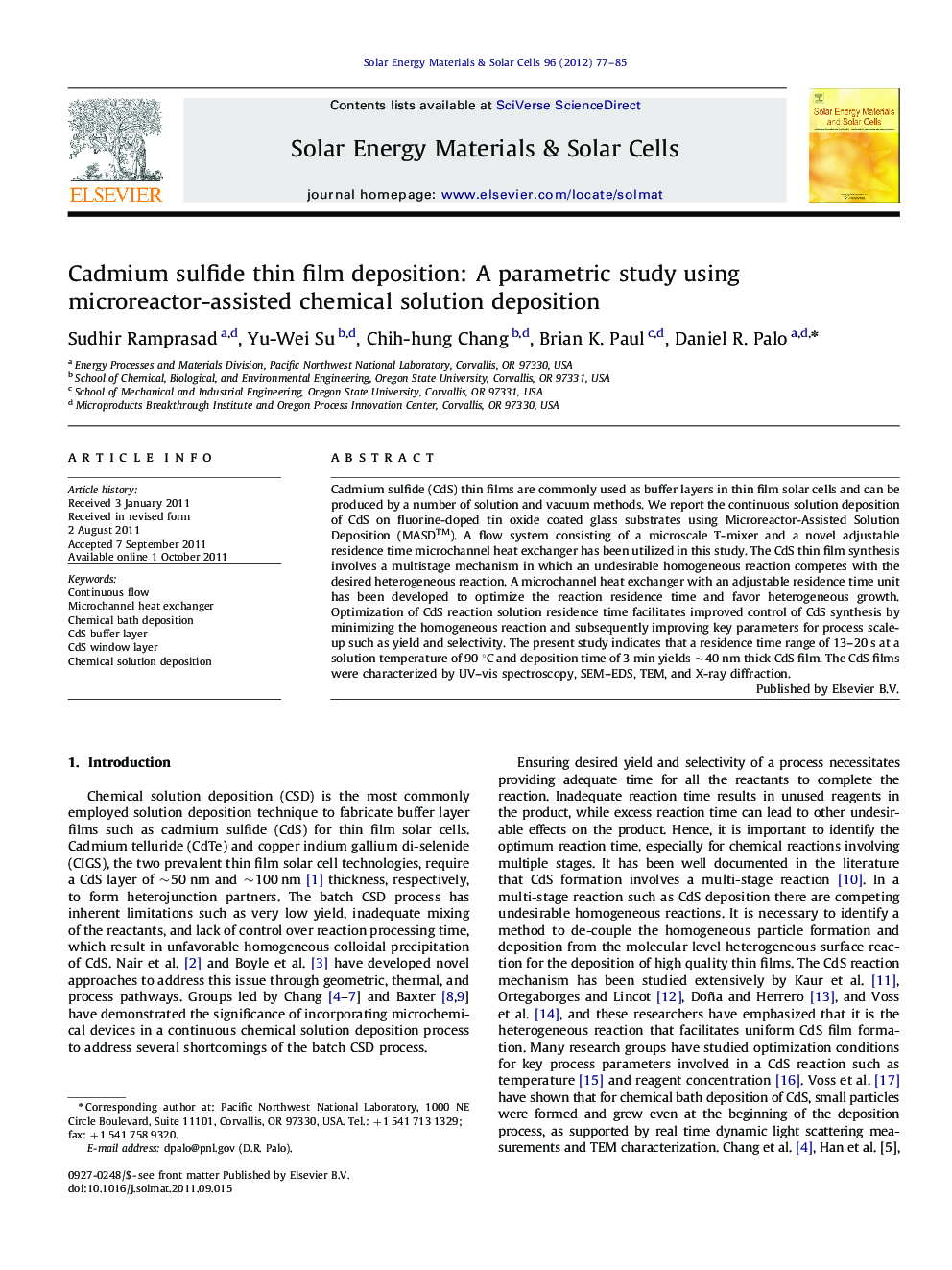| Article ID | Journal | Published Year | Pages | File Type |
|---|---|---|---|---|
| 79468 | Solar Energy Materials and Solar Cells | 2012 | 9 Pages |
Cadmium sulfide (CdS) thin films are commonly used as buffer layers in thin film solar cells and can be produced by a number of solution and vacuum methods. We report the continuous solution deposition of CdS on fluorine-doped tin oxide coated glass substrates using Microreactor-Assisted Solution Deposition (MASD™). A flow system consisting of a microscale T-mixer and a novel adjustable residence time microchannel heat exchanger has been utilized in this study. The CdS thin film synthesis involves a multistage mechanism in which an undesirable homogeneous reaction competes with the desired heterogeneous reaction. A microchannel heat exchanger with an adjustable residence time unit has been developed to optimize the reaction residence time and favor heterogeneous growth. Optimization of CdS reaction solution residence time facilitates improved control of CdS synthesis by minimizing the homogeneous reaction and subsequently improving key parameters for process scale-up such as yield and selectivity. The present study indicates that a residence time range of 13–20 s at a solution temperature of 90 °C and deposition time of 3 min yields ∼40 nm thick CdS film. The CdS films were characterized by UV–vis spectroscopy, SEM–EDS, TEM, and X-ray diffraction.
► We explore the effects of temperature, solution age, and deposition time on chemical solution deposition of CdS films. ► Films were characterized without post-annealing. ► Optimum window of operating conditions was defined for achieving particulate-free films. ► Adjustable microchannel heat exchanger was employed to tightly control solution temperature and residence time. ► Film characterization indicated nanocrystalline CdS films suitable for buffer layer and window layer.
